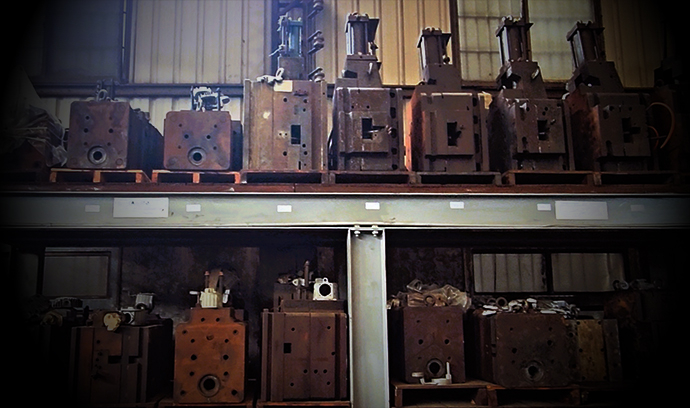
Die casting mold design and development is a critical step in producing high-quality, precision metal parts. A well-designed mold ensures product accuracy and consistency, minimizes production costs, reduces defects, and accelerates time-to-market. Each phase of the mold development process, from mold flow simulation to mold mounting and trial molding, plays an essential role in achieving reliable, efficient, and defect-free die casting production. To better understand the process, it is important to start with the fundamentals of die casting mold design.
Introduction to Die Casting Mold Design
Die casting molds are complex tools designed to shape molten metal into precise parts, especially in aluminum die-casting applications where strength and lightweight performance are essential. The mold design process involves careful planning, engineering, and testing to ensure the final product meets required specifications. By optimizing mold geometry, cooling channels, and venting systems, manufacturers can prevent defects such as porosity, air traps, and weld lines. A strong mold design also enables consistent mass production and improves overall manufacturing efficiency.
High-quality die casting starts with intelligent mold design and thorough development planning.
How Mold Flow Simulation Improves Die Casting Quality
Mold flow simulation is a virtual testing method that predicts how molten metal will fill a mold during die casting. Using specialized software, engineers can simulate the entire casting process, identifying potential problems before physical production begins.
What Mold Flow Simulation Does
- Simulates filling patterns and cooling behavior: Helps engineers predict where the metal will flow smoothly and where hot spots may occur.
- Identifies potential air traps and weld lines: Reduces defects and ensures structural integrity.
- Optimizes gate location and venting design: Minimizes turbulence and porosity for better quality parts.
Example: By analyzing mold flow patterns for an aluminum automotive part, engineers were able to reduce air traps by 30%, avoiding costly rework during production.
Benefits for Die Casting Production
- Saves time and cost: Virtual testing prevents trial-and-error in physical molds.
- Reduces mold rework: Detects problems before production, avoiding expensive modifications.
- Improves product quality: Ensures uniform metal distribution, preventing defects.
Once the virtual testing and optimization are complete, the next step is preparing the mold for actual production by mounting it on the die casting machine.
Mold Mounting & Setup: Laying the Foundation for Mass Production
Proper mold mounting, also known as mold setup, is a crucial step before beginning trial molding or mass production. It ensures that the mold operates stably on the die casting machine and that all systems function correctly.
Proper Mold Alignment
Aligning the mold accurately with the injection nozzle is essential. Misalignment can cause flash, poor filling, or uneven cooling. Precision in this step ensures consistent part quality.
Connecting Cooling & Exhaust Systems
Connecting water cooling channels and exhaust vents correctly maintains temperature control and proper gas evacuation during casting. Efficient cooling reduces cycle times and prevents warping or shrinkage.
Preparing for Test Shots
Once mounted, the mold is ready for trial molding. Engineers can run test shots to evaluate mold performance, make adjustments, and fine-tune parameters before full-scale production begins.
With the mold securely in place, manufacturers move on to trial molding, a step that ensures part quality before committing to mass production.
Trial Molding: Ensuring Quality Before Mass Production
Trial molding, also called test casting, is a vital step that confirms mold functionality and product quality. It allows manufacturers to detect and correct defects before committing to large production runs.
Why Trial Molding Matters
- Confirms mold functionality: Ensures the mold produces parts within required tolerances.
- Identifies casting defects early: Detects issues such as porosity, surface blemishes, or misalignment.
- Fine-tunes machine parameters: Adjusts injection speed, pressure, and temperature for optimal results.
Example: A trial run of a precision aluminum part revealed a minor weld line issue. Correcting it before mass production saved thousands of dollars in potential scrap and rework.
How to Conduct Trial Molding
- Install the mold on the die casting machine and connect all systems.
- Run several test shots to observe part quality and filling patterns.
- Measure dimensional accuracy, surface finish, and detect any defects.
- Adjust mold design or machine parameters as needed.
- Document results to guide mass production.
Insights gained from trial molding provide valuable lessons that shape best practices in die casting mold development.
Best Practices in Die Casting Mold Development
- Conduct thorough mold flow simulations before manufacturing the mold.
- Ensure precise mold mounting and correct setup of cooling and venting systems.
- Perform trial molding and document all observations for continuous improvement.
- Optimize mold design iteratively based on trial results to minimize defects.
- Keep detailed records of parameters and outcomes to ensure reproducibility for future production runs.
By following these best practices, manufacturers can achieve defect-free, high-quality parts in aluminum die-casting, forging, and metal parts manufacturing, while also improving production efficiency and reducing costs. Achieving defect-free, cost-efficient production requires more than just advanced equipment, it requires expertise in die casting mold design and development. Reach out to GRAMOS and let our specialists help optimize your next project.